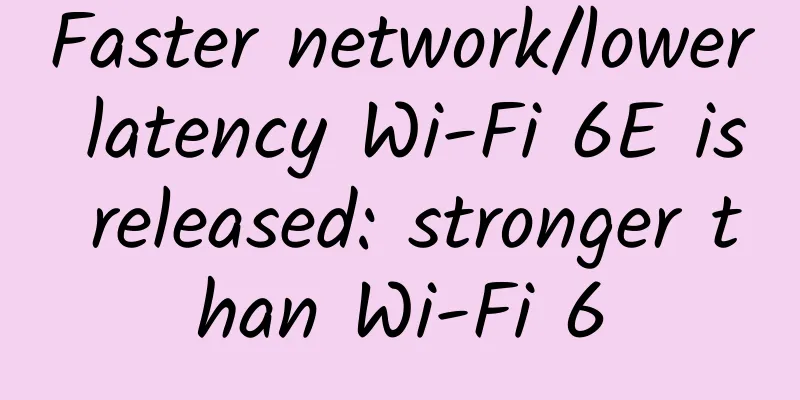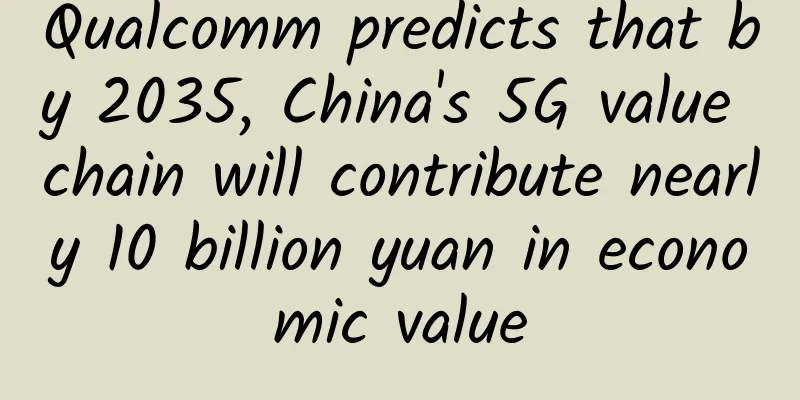Faster network/lower latency Wi-Fi 6E is released: stronger than Wi-Fi 6

|
As 5G technology develops rapidly, Wi-Fi technology has also ushered in innovation. Now, Wi-Fi 6E has emerged based on Wi-Fi 6, which has not yet been fully popularized. This seems to prove that advanced technology is being held back by people's needs. What is the difference between Wi-Fi 6 and 6E? Wi-Fi 6E is the result of an application by technology companies in the Wi-Fi Alliance, such as Apple, Microsoft, and Google, to the U.S. Federal Communications Commission (FCC) to civilianize the 6GHz frequency band in the hands of the U.S. military. Compared to Wi-Fi 6, it brings a new 6GHz band, accommodating 14 additional 80MHz channels and 7 additional 160MHz channels. It will bring faster network speeds and lower latency than Wi-Fi 6.
Demand determines the popularity of technology applications In fact, the benefits of the latest wireless network technologies such as Wi-Fi 6 are obvious. Just like 5G communication technology, it can take people's network experience to the next level. But the cost is also high, such as the need to update existing wireless transmission equipment and the increase in power consumption of the corresponding Wi-Fi module. But compared with these technical problems, the more embarrassing problem is that people currently have no rigid demand for this gigabit-level wireless network. It can only bring a taste of it to a small number of people. What needs hold back technology? In fact, there are many technologies that are in the same awkward situation as Wi-Fi 6. Advanced technologies such as VR/AR and 3D printing, which were popular five years ago, actually have a foundation for implementation. Unfortunately, neither consumers nor businesses have found a hungry market to popularize them. VR glasses were once claimed to provide people with an immersive experience, but now, after searching the entire Internet, only a few old models of glasses are still on sale, and a few software that are no longer updated. This is not only due to the performance limitations of mobile devices, but also because the cost of producing related adaptation resources is high. Therefore, it did not become popular after a short period of hype. 3D printers, which were promoted as being able to print anything in Industrial Revolution 4.0, are currently only sold on the market for general practical applications such as printing mobile phone cases and small pendants due to material and time limitations.
Which technologies have not been left behind? On the other hand, there are also positive cases in the matter of network technology. For example, when the previous 2G network was upgraded to 3G network, it was because people had new demands for traditional text information transmission. People began to send and receive MMS, photos, and music, which made the faster 3G network come in handy. In the 4G era, due to the demand for video transmission, 4G technology has a demand application space, and has also given rise to the explosion of video self-media, video websites and short videos. However, with the current 5G, there is still no application scenario that everyone needs. Although the technology is good, after implementation it only increases the network speed and reduces the latency. For 90% of people, it only reduces the loading time of videos by one or two seconds and speeds up some downloads, but this is not enough to drive people to spend more money to replace new 5G mobile phones and tariff plans. Conclusion Whether it is Wi-Fi 6, 6E, 6F, or 6G, if people do not have enough demand for it, its market value cannot be realized. Back to 6E, if 6E is used, Wi-Fi 6 will be obsolete before it starts to build an ecosystem and become popular. Did we invent a technology just to make it obsolete?
|
<<: Demand is holding back technology. WiFi6 is not yet popular. 6E is coming.
>>: China Radio and Television faces three major challenges on its 5G journey
Recommend
After the holidays, I return to work and upgrade my home router to welcome the New Year.
In the face of the epidemic, staying at home and ...
A comprehensive guide to IP addresses
IP address is a term that everyone is familiar wi...
The role of 5G in education: enabling distance learning and virtual labs
In an era of rapid technological change, 5G is mo...
Extend PoE Distance: Unlock the Maximum Range of Power over Ethernet
Power over Ethernet (PoE) has revolutionized the ...
Lerong Cloud and partners work together to create a new era of smart home and smart community
[51CTO.com original article] On September 6, 2018...
Performance improvements of Http/2 compared to Http/1.1
What has changed since HTTP/1.1 was invented? HTT...
VMISS newly launched Hong Kong international line VPS with 30% discount and annual payment starting from 10 US dollars, and you can choose US CN2 GIA/AS9929/CMIN2, etc.
A few days ago, we shared the information about D...
In the interview, I was asked how the reliability of TCP is guaranteed?
We know that TCP is reliable. Our previous articl...
Opportunity or chicken ribs? eMTC should not follow the NB-IoT price war
[[255921]] Recently, the official website of the ...
Traditional metropolitan area network architecture encounters bottlenecks and introducing NFV becomes an effective solution
With the rapid development of "Internet +&qu...
Graphical explanation | A brief history of what is HTTP
[[344212]] This article is reprinted from the WeC...
[11.11] LOCVPS top up 1000 yuan and get 100 yuan, Hong Kong VPS 30% off, 20% off for all
LOCVPS (Global Cloud) released a promotional plan...
HostXen offers 50 yuan for registration, 50 yuan for old users who charge 300 yuan, and 6G memory packages for the United States/Japan/Hong Kong start from 70 yuan
HostXen is a Chinese hosting provider founded in ...
WiFi 7 is coming, but is it really reliable?
There is no fastest, only faster. WIFI6 has just ...









